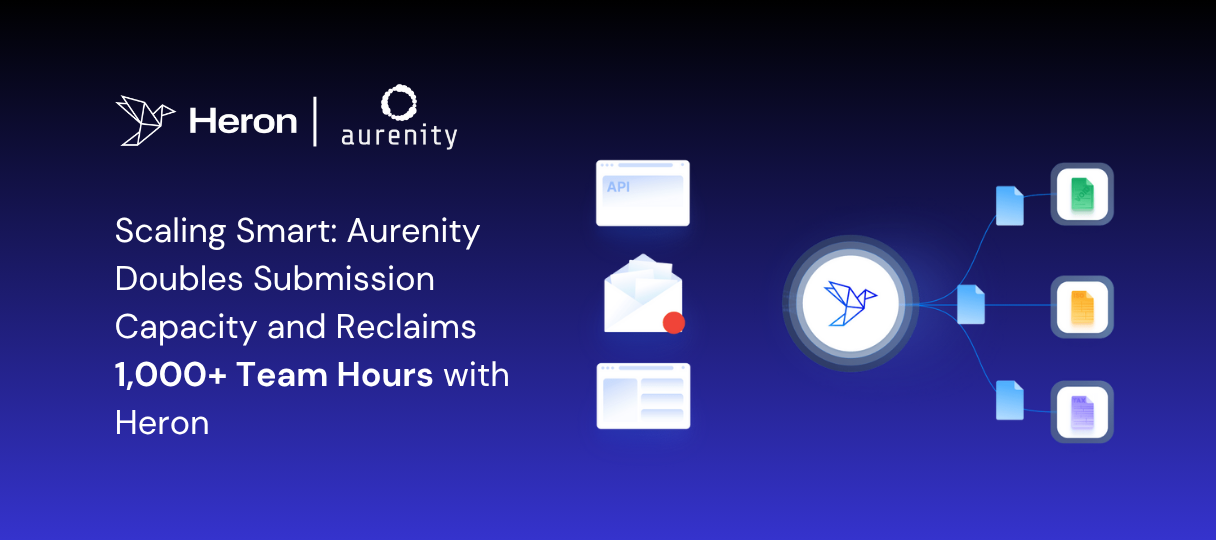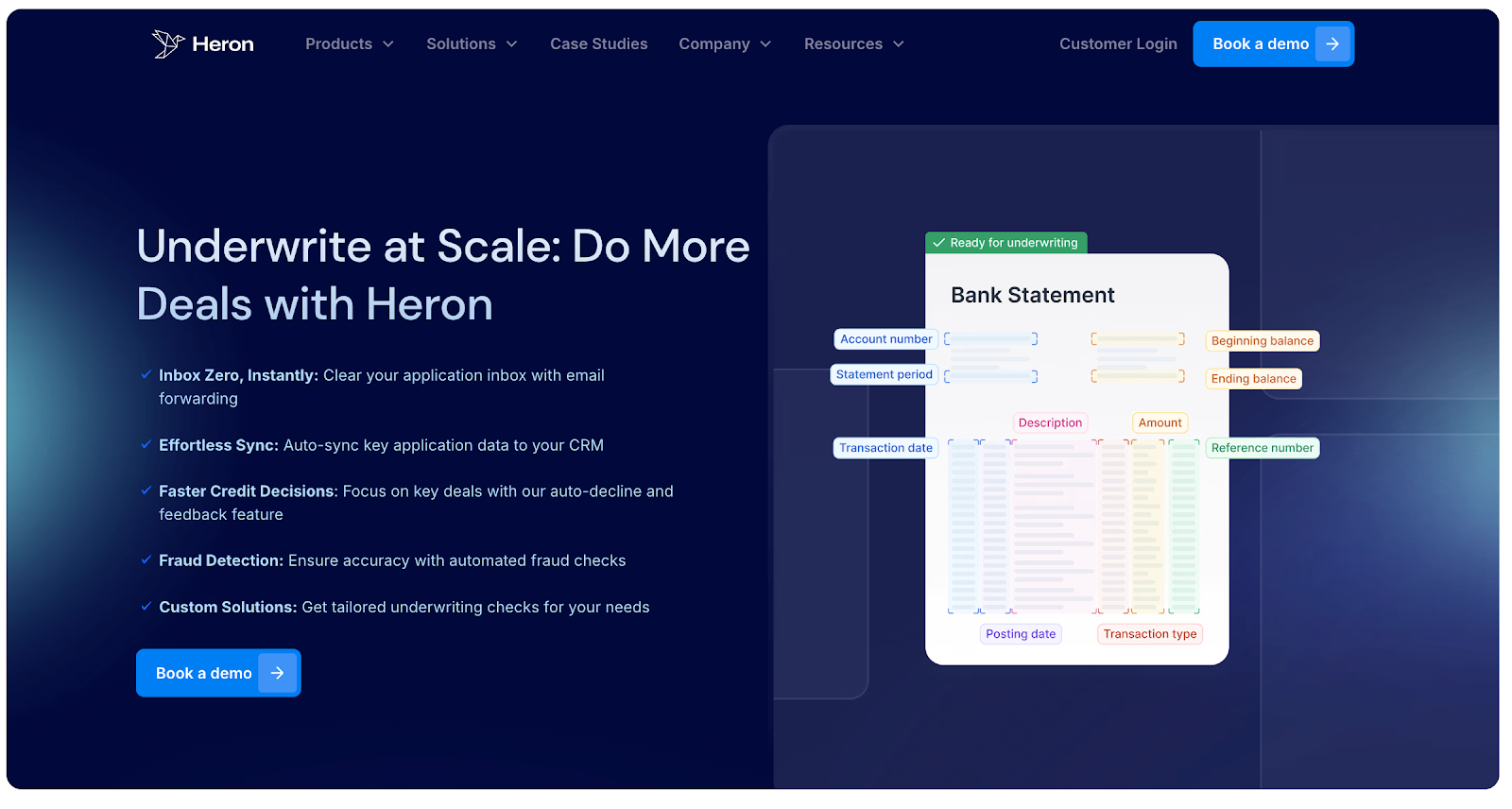Underwriting can be one of the most time-consuming parts of the insurance business. Despite advanced technology, many teams still rely on doing things by themselves. Manual data entry, sorting emails, and checking each and every document for fraud or missing details.
When submissions pile up, underwriters often spend more time on paperwork than on actual risk evaluation. With an industry that relies on speed, being slower than your competitor is absolutely not a good idea.
Thankfully, insurance underwriting tools can now help you automate the most repetitive tasks in the underwriting process. Let's discuss what they are and how they can help your team.
What Are Insurance Underwriting Tools?
Insurance underwriting tools are software systems that help underwriting teams manage their daily work faster and with greater accuracy.
They support the insurance underwriting process by turning manual tasks into simple digital workflows.
Many tools use technologies like natural language processing (NLP), machine learning (ML), data analytics, and artificial intelligence (AI) to process documents and identify trends that affect risk evaluation.
Some include automated underwriting features that can review applications and suggest decisions based on your company’s rules. This helps your team work faster, reduce errors, and strengthen your business and profitability.
Some modern tools are cloud native solutions, which means you can access them anytime, anywhere.
Which Areas of the Insurance Underwriting Process Can These Tools Help With?
Modern underwriting tools help you simplify complex steps across the insurance underwriting process. Below are some key areas where these tools can make a real difference for your team.
Data Intake
The first step in underwriting is handling large amounts of data from different sources.
Intelligent document processing tools use AI models and natural language processing to scrub, clean, and organize information from forms, submissions, and supporting documents.
Some tools can also analyze and verify business bank statements for accuracy and fraud detection. They scan transactions, compare them with reported income, and highlight unusual activity.
Task Management
Task management is the process of organizing, assigning, and tracking work to keep projects moving smoothly.
In the insurance industry, this often means managing hundreds of small but important tasks, like reviewing applications, verifying documents, and approving policies.
Without proper systems, these tasks can pile up, cause delays, and affect underwriting accuracy.
Risk Assessment
Accurate risk assessment is the heart of underwriting. Tools using predictive analytics, machine learning, and data mining help you identify risks and simulate potential outcomes.
These systems give you better insight into each client’s risk profile by analyzing both internal and external data sources.
Policy Management
Once risks are assessed, managing policies efficiently is the next step. Automation tools help with policy issuance, updates, renewals, and claims handling.
This improves accuracy, reduces turnaround time, and keeps customers satisfied.
What Makes Insurance Underwriting Software Important?
Insurance underwriting software is now a core part of how teams can stay competitive and efficient in the insurance industry.
So, if you haven't tried it out and really want to know what it can offer you, we've listed some of its benefits below:
Fewer Errors
Manual processes often leave room for human error, especially when reviewing complex applications. Underwriting software can minimize those risks by applying the same rules consistently and objectively.
It checks data accuracy, verifies compliance, and runs automated validations before decisions are made.
One sample tool is Heron. This platform can automate loss run parsing. Loss run reports include important details about claims, payments, and reserves that help underwriters measure risk and set prices.
By automating this process, Heron improves risk assessment accuracy by providing cleaner, more reliable data for decision-making.
Improved Efficiency Across The Underwriting Cycle
Underwriting systems are built to help your team reduce manual tasks. By automating repetitive tasks such as data entry, document routing, and status tracking, your underwriters go straight through processing deals.
Heron, for instance, enables insurers to save time with its smart automation features. Once you receive case files and documents, either through email forwarding, API, or bulk upload, Heron automatically classifies documents into the right categories, removing the need for manual sorting.
It then parses and validates each file, scrubbing key data points into your underwriting format while flagging potential fraud. This gives you clean, structured data to work with, cutting down review time.
The system also enriches your data using machine learning and third-party sources. It can confirm business details, pull credit scores, categorize bank transactions, and detect suspicious activity.
This combination of automation and advanced analytics helps underwriting teams make faster and more accurate decisions.
Handle More Submissions Without Increasing Headcount
Many insurers spend huge amounts of money and time on manual processes such as data collection and rekeying tasks.
The global spend on business process outsourcing (BPO) now exceeds $300 billion, yet much of that work still involves manual data handling. Even tools like RPA, OCR, or IDP only cover part of the process, leaving big gaps in automation.
Shifting to digital workflows can allow insurers to cut labor and IT costs and have more time to focus on making informed decisions and building stronger relationships with clients.
Take, for example, Trivora Insurance. It's a cyber-focused MGA that launched its product line with Heron. Heron became their intake system, business rules engine, and orchestration layer in one connected platform.
Because of this, they did not need to hire any underwriting assistants (UAs) or depend on BPOs. With Heron, Trivora now quotes policies in less than five minutes and delivers results 12 hours faster than competitors.
They were able to enter the market faster, saved hundreds of thousands of dollars, and scaled operations without adding staff.
Better Compliance And Fraud Prevention
Keeping your underwriting process compliant and accurate can be challenging, especially when your team manages large volumes of submissions.
Manual reviews take time and increase the risk of missed details or inconsistent risk selection. Automated underwriting software solves this problem by tracking every step, recording complete audit trails, and checking each submission for regulatory compliance.
For example, Heron Checks automatically validates submissions against your business rules, underwriting criteria, and compliance requirements.
The system also provides instant feedback about submission completeness, rule violations, and approval status, helping you keep your process fast and accurate. It can also do fraud detection, protecting you from potential financial losses.
You can customize Heron Checks to match your specific underwriting needs. Just set up rules like “reject if state contains California” or “flag if loan amount exceeds $10,000.” These rules run automatically as submissions move through the workflow.
Each file is checked in real time, helping your team maintain consistent risk selection while staying aligned with regulatory standards.
What Should You Consider Before Choosing Insurance Underwriting Software?
Choosing the right insurance underwriting software is a big decision. Here are some key factors you need to keep in mind before making a decision.
Business Objectives And Long-Term Goals
First of all, check whether the software supports your company’s underwriting goals and growth plans.
The system should align with your risk appetite, automation level, and future business strategy. You want a tool that can handle your unique needs, help improve your operational efficiency, and still adapt as your organization expands or regulations change.
The right platform helps you save time, manage risks better, detect fraud, and scale without rebuilding your workflows.
Data Management And Compliance
Strong data protection is a must for every insurance underwriter. You handle sensitive client information, financial records, and business data every day.
This means your software must follow strict security frameworks to protect that information and maintain trust.
The most reliable underwriting systems follow SOC 2, GDPR, and CCA standards.
- SOC 2 (Service Organization Control 2): Focuses on data security, privacy, and reliability, giving underwriters confidence that every document and customer record is stored safely.
- GDPR (General Data Protection Regulation): Governs how personal data is collected and used, helping underwriters handle client information responsibly and transparently.
- CCA (Cloud Controls Alliance): Guides secure cloud operations, protecting company and client data when using cloud-based underwriting systems.
User Interface And Workflow Design
Your team will use this software every day, so it should be simple and easy to understand. Look for a clear, user-friendly interface that helps your underwriters focus on their work instead of struggling with complex menus.
Features like document management, automated workflows, and real-time updates keep everything organized.
When the system connects smoothly with your CRM and other tools, your team can move through tasks faster without jumping between platforms.
Reporting And Analytics Tools
Your software should provide actionable insights through customizable dashboards and reports. The platform you choose should be able to track claims ratios, expense ratios, and underwriting performance in one place.
Data visualization tools help you spot trends, monitor team performance, and make informed decisions based on real results, not guesswork.
Customization And Flexibility
Every insurance company has its own rules and product variations. Choose a system that adapts easily to your needs.
Low-code tools let you change workflows or build new processes without waiting for developers. This flexibility helps you stay compliant with regional rules, test new product lines, and adjust to market changes quickly while keeping your team productive.
How Heron Can Help MGAs Speed Up Their Workflows
Managing general agents, or MGAs, play a unique role in insurance. They have the authority from carriers to underwrite and bind policies. MGAs often specialize in certain areas like cyber liability, fleet, or commercial property.
Their job is to take in submissions from retail agents, evaluate the risk, and bind coverage when the terms fit. To succeed, they need to move quickly while staying accurate.
The challenge is that MGAs handle high submission volume, and most of it comes through shared inboxes. Every submission needs to be entered into a PAS before underwriting can begin.
Add to that the extra work of inspection reports, appetite checks, and claims files, and teams quickly run out of time.
Heron automates the most time-consuming parts of underwriting workflows. This speeds up quote turnaround times, cuts down delays, and improves the accuracy of underwriting decisions.
Let's take a closer look at Heron's use cases for MGAs below:
Submissions Intake & Parsing
MGAs handle two big data challenges: a constant flow of new submissions and the need to work through complex supporting documents. Submissions often arrive by email, with key details buried in attached forms or spreadsheets.
At the same time, underwriters must review claims documents, loss runs, and policy files that can stretch for dozens of pages. Doing this by hand takes hours and slows down quoting.
Heron automates both parts. It takes submissions directly from inboxes, extracts the relevant fields, and pushes clean data into PAS systems like Salesforce or Novidea.
It also parses large, unstructured documents, pulling out claims history, loss details, or coverage information and structuring it for underwriters.
The result is faster intake and less manual work.
A commercial auto MGA that processes 30 or more submissions a day can use Heron to move data from the inbox to PAS instantly, while also parsing long claims reports in seconds.
As a result, underwriters gain back hours each week and can focus on evaluating risks instead of copying and pasting information.
Carrier Appetite Checks
Every MGA has to match risks with what their carrier partners are willing to take. If they waste time quoting risks that do not fit, they frustrate carriers and lose productivity.
Heron compares submissions against carrier appetites right away. This keeps underwriters focused only on the deals that have a real chance of binding.
Imagine an MGA working in excess casualty. With hundreds of daily submissions, manually checking each one against the appetite guidelines would take hours.
Heron does this instantly, so the team spends time only on viable deals.
Inspection Reports
After a policy is bound, MGAs still have to handle inspection reports. The data in those reports needs to be checked against the original application, which usually means more manual comparison work.
Heron automates this process by matching inspection details with application data and flagging any differences.
Take a small business or commercial property MGA. They might bind dozens of policies a week, each with an inspection report that has to be checked line by line.
With Heron, that work happens in the background. The team gets clean, structured data and only needs to review flagged items.
How Aurenity Insurance Doubled Its Submission Capacity with Heron
Aurenity, an Excess and Surplus MGA, was dealing with a familiar problem. Submissions were flooding in each month, but processing them was slow and manual.
Their team spent too much time opening documents, entering data, and checking details instead of focusing on actual underwriting work.
Hiring more staff wasn’t the answer, so they needed a smarter way to manage growing volume.
Scaling Smart with Heron
Aurenity needed a system that could handle complex submissions without slowing their team down. Heron offered exactly that. A high-quality parsing and enrichment platform that fits right into their workflow.
The setup was quick and simple, delivering cleaner outputs while connecting smoothly to Aurenity’s core system.
With Heron, Aurenity saw real, measurable results after bringing Heron into their process, such as:
They reclaimed more than 1,000 annual team hours by cutting down on manual work. Both the BPO and underwriting teams could finally spend more time on analysis and quality reviews instead of routine data entry.
The company also doubled its submission capacity without hiring extra staff. Heron made it possible to handle more quotes in less time, all without adding new overhead.
Data accuracy improved across the board. With cleaner and more consistent information, underwriters had fewer errors to fix and could move quotes through much faster.
And finally, the pipeline became much cleaner. Heron’s smart triage filtered out poor-fit submissions early, so underwriters focused only on the opportunities that really mattered.

Clear Your Submissions Inbox Instantly with Heron

Every insurance team knows the challenge of a messy inbox. Submissions arrive through email in different formats, often incomplete, inconsistent, and hard to manage. Teams spend hours sorting files, entering data manually, and checking documents for missing information.
Heron is an AI-driven platform that collects documents, reads and validates their data, detects fraud, flags missing information, and enriches records with details from trusted sources.
It transforms unstructured files into structured, usable data automatically. Heron also offers seamless integration with systems such as Origami Risk, Novidea, Jōshu, Salesforce, and Data Lakes.
It also links with enrichment tools like HazardHub, Google Maps, and ZestyAI for additional insights.
And the results speak for themselves:
- More time for underwriting: Heron empowers underwriters by cutting admin work by up to 80%, giving them more time for analysis, pricing, and risk evaluation.
- Lower processing costs: Heron reduces processing costs by over 75%, bringing the average $50 per application down. This helps your team achieve better outcomes while keeping expenses low.
- Process submissions faster: Submissions that used to take days can now be completed in just a few hours.
- Higher capacity without hiring: Heron allows your team to handle twice as many submissions without adding staff. It supports growth while keeping operations smooth, efficient, and accurate.
FAQs About Insurance Underwriting Tools
What are underwriting tools?
Underwriting tools help insurance companies assess risk before approving policies. They analyze data, automate decisions, and use predictive models to speed up reviews while reducing human errors.
What are the three types of underwriting in insurance?
The three main types are loan underwriting, security underwriting, and insurance underwriting. In insurance, it focuses on checking risks related to health, life, or property coverage, making sure policies are priced fairly while enhancing efficiency and accuracy.
Can AI do insurance underwriting?
Yes, AI can support insurance underwriting by analyzing large data sets faster than humans. Heron automates manual underwriting tasks like data entry and document review, sending clean, structured data directly into your CRM in seconds.
What are the three main elements of underwriting?
The key elements are risk evaluation, premium calculation, and policy terms. These steps give underwriters the whole story about the applicant, helping them decide if coverage should be approved and what price is suitable.


